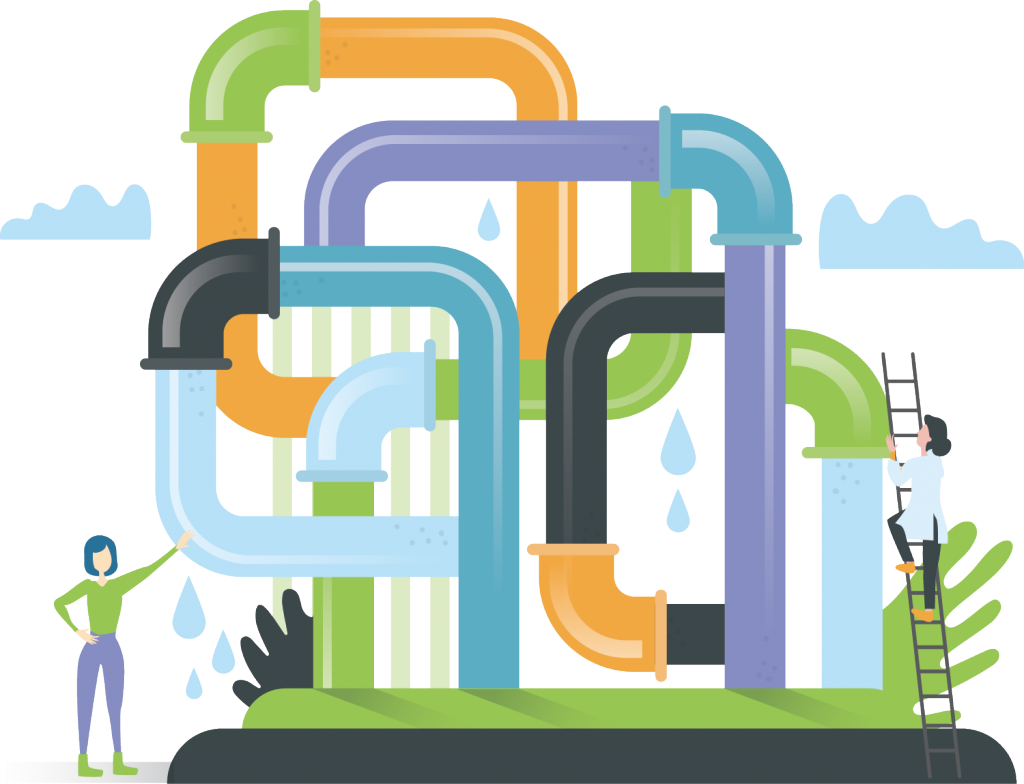Water treatment entails treating the raw water from the abstraction stage to meet the drinking water standards.
Water treatment energy and GHG emissions can be affected by some of the other stages in the water cycle, as noted on the left column, particularly by the quality and the quantity of the raw water to be treated. However, other factors can impact this stage’s energy consumption and GHG emissions:
- Treatment technology selection and efficiency.
- Pumping efficiency.
- Distribution network design and local topography (hilly or flat).
- Energy source (renewable, fossil fuels, grid energy mix).
| Impacted by: | Impacts: |
|---|---|
| Water Abstraction The quality of the water abstracted defines the treatment required; hence the energy required. | Water Abstraction The distance and elevation of the drinking water treatment facilities will dictate how much energy is needed to pump the water from the source to the treatment. |
| Drinking Water Distribution Water loss in the drinking water distribution system increases the volume of water treated, and therefore the energy requirements. | Drinking Water Distribution The distance and elevation of the drinking water treatment facilities will dictate how much energy is needed to convey the water to the end users at an adequate pressure. |
| End users Excessive water usage by End Users increases the volume treated and therefore the energy requirements. |

